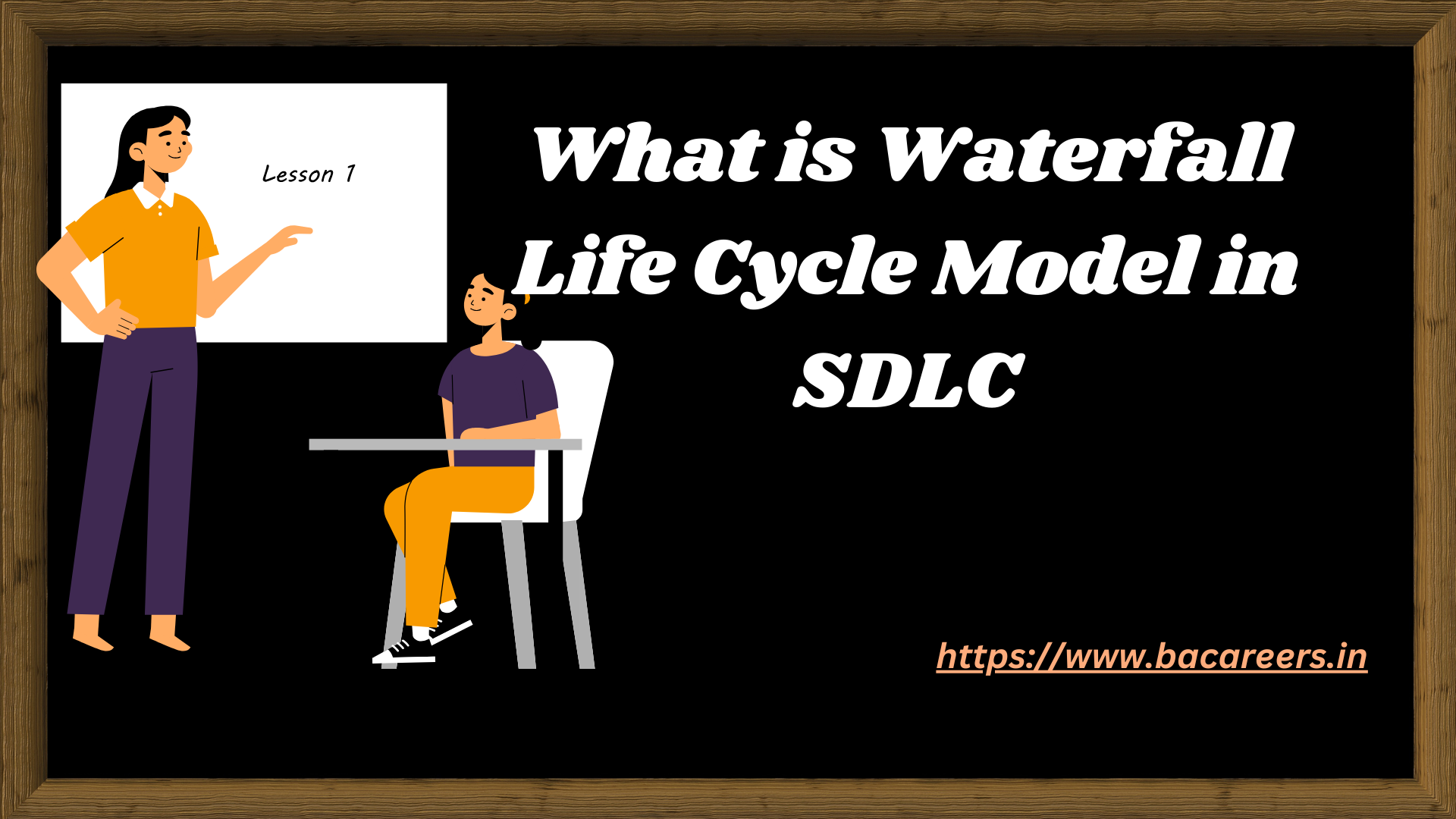What is Waterfall Life Cycle Model in SDLC
The Waterfall Model is a sequential and linear approach to software development that is part of the Software Development Life Cycle (SDLC). The SDLC is a framework that defines the process of software development from the initial planning stages to deployment and maintenance. The Waterfall Model is one of the classic models within the SDLC.
The Waterfall Model is a linear sequential approach to software development that follows a specific set of steps in a specific order. It is one of the oldest and most widely used models in the software development life cycle (SDLC). The model is divided into distinct phases, each of which must be completed before moving on to the next. These phases include requirements gathering, design, implementation, testing, deployment, and maintenance.
The Waterfall Model is based on the idea that each phase must be completed before the next one can begin, and that there is no going back once a phase has been completed. This means that the requirements for the project must be clearly defined at the beginning of the project, and any changes that are made later on can be costly and time-consuming.
The Waterfall Model is a good choice for projects where the requirements are well-defined and unlikely to change significantly over time. It is also beneficial for projects where a clear understanding of the end product is required before any work can begin. However, it may not be the best choice for projects where the requirements are uncertain or may change frequently, as it is difficult to make changes once a phase has been completed.
Overall, the Waterfall Model is a popular choice for software development projects that require a structured, sequential approach. While it may not be suitable for all projects, it is a reliable and proven method for delivering high-quality software on time and within budget.

The Waterfall Model in the SDLC consists of the following phases:
- Requirements Phase: The project’s requirements are gathered and documented in detail. This involves communication with stakeholders to understand their needs and expectations.
- Design Phase: Based on the gathered requirements, the system architecture and design are planned. This phase involves creating a high-level design and a detailed low-level design.
- Implementation Phase: The actual coding or programming of the software is done in this phase. Developers use the design specifications to build the software.
- Testing Phase: After implementation, the software undergoes testing to identify and fix any defects or issues. This phase ensures that the software meets the specified requirements and is free of major bugs.
- Deployment (or Installation) Phase: Once testing is successful, the software is deployed to the production environment, making it available to end-users.
- Maintenance Phase: This phase involves ongoing support and maintenance of the software. Any issues that arise post-deployment are addressed, and updates or improvements may be made as necessary.
The Waterfall Model is characterized by its rigid and sequential structure, where each phase must be completed before moving on to the next. This approach is suitable for projects with well-defined and stable requirements, where changes are unlikely to occur during the development process. However, it may be less adaptable to projects with evolving or uncertain requirements.
While the Waterfall Model has its advantages, such as clarity and simplicity, it has limitations in handling changes and accommodating dynamic project requirements. As a result, alternative SDLC models, such as Agile, have gained popularity for their flexibility and iterative nature.
Related Articles :
How the Waterfall Model Ensures Seamless Project Delivery
The Main Difference Between Agile and Waterfall Project Management
What are the Advantages of Waterfall Model?

Business Analyst , Functional Consultant, Provide Training on Business Analysis and SDLC Methodologies.

What is Waterfall Life Cycle Model in SDLC » BACareers, The Business Analyst Blog
[url=http://www.g21779l6n46u44zqf4ky6g6kmnp03p3fs.org/]urnolznsyn[/url]
arnolznsyn
rnolznsyn http://www.g21779l6n46u44zqf4ky6g6kmnp03p3fs.org/
Nice blog here Also your site loads up fast What host are you using Can I get your affiliate link to your host I wish my web site loaded up as quickly as yours lol
You actually make it seem so easy with your presentation but I find this matter to be really something that I think I would never understand. It seems too complicated and very broad for me. I am looking forward for your next post, I will try to get the hang of it!
Thank You